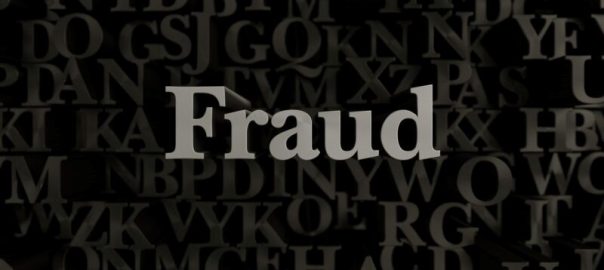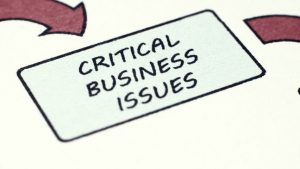Ask experts about ad fraud and you will get a mix of actionable advice and skepticism about whether anything can be done.

The Association of National Advertisers had some good news for the Cannes Lions audience earlier this month. In 2023, media buys on mostly bogus made-for-advertising (MFA) websites represented an extraordinary 15% of ad spend. A year later, that had dropped to 4%. Slightly souring the news is the fact that digital ad spend is projected to grow by 16% in 2024, so that’s 4% of a larger number. And 4% is still a lot.
Of course, suckering brands into buying programmatic inventory on sites with little or no engaging content is just one flavor of ad fraud and — although estimates of the scale of the problem differ — ad fraud is still eating up huge portions of media budgets.
In addition to the use of MFA sites, types of ad fraud include (but are not limited to):
- Click fraud: The use of bots to generate large numbers of clicks on PPC ads to create the appearance that they are reaching a large human audience.
- Domain spoofing: The impersonation of a high value domain. Clicks and users may be real, but they don’t represent reaching a high value audience.
- Pixel stuffing: Crushing multiple ads in a single pixel frame. When a user clicks on the frame, she is clicking on ads that are actually invisible to her.
- Ad stacking: Much the same as pixel stuffing, except the ads are of normal dimensions. Only the one on top is visible, although clicking the top ad effectively clicks all of them.
A very big deal
If you think ad fraud is a marginal problem, take a look at some of the higher estimates of its scale. Analysts at Juniper Research reported that about $ 100 billion will be lost to ad fraud this year, or some 22% of media spend. The projection is that, by 2028, the percentage remains fairly level (23%), but because media spend is climbing rapidly, that means a loss of $ 172 billion. Even if Juniper is over-estimating the loss by as much as 50%, that’s still an extraordinary number.
To paraphrase John Wanamaker, “Half the money I spend on advertising is wasted. No, make that 75%.”
The Juniper report was shared with us by Ann Tarasewicz, CEO of programmatic platform Axis. At the time we spoke with her, she was temporarily relocated to Romania from her home city, Odesa in Ukraine. “The current state of ad fraud is a serious challenge to the industry as a whole. The fraudsters are trying to be more advanced, more organized and up-to-date.”
How can brands accept this situation? “Brands are mostly interested in volumes, of course, but I would say that if a publisher is involved in low-quality traffic, that is something that can harm the brand’s reputation.”
Are any humans paying attention?
Back in January, MarTech contributor Greg Krehbiel quoted another extraordinary statistic from the book “Adscam” by Bob Hoffman: 3% of digital ad spend corresponds to actual ads seen by humans. “No, make that 97%.”
“It’s a hugely bad problem,” said Krehbiel. “Since I published that article in January, there was the Forbes story where they basically made an entire website that nobody saw that was serving all these ads.” Forbes ran this site, “mistakenly,” for several years.
Perhaps brands are willing to overlook the waste of ad dollars as long as campaigns are generating lift? “It doesn’t matter how much fraud is in there; if it’s 99% fraud, the 1% is good,” said Krehbiel, “so where’s the problem? I think it all comes down to whether people are basing their decision on whether to continue a campaign based on numbers from the ad suppliers or whether they’re basing the decision on actual results they’re seeing on their side.”
What is to be done?
Tarasewicz lists a range of options for combatting ad fraud. “There is no solution that is one-size-fits-all, unfortunately,” she said. “Brands should combine options to tackle this issue.” She lauds collaborative approaches like that represented by the Trust Accountability Group (TAG). “It brings together the advertisers, the publishers, law enforcement agencies — all the market players. They are able, by exchanging their individual knowledge, to understand how to prevent fraud in a better way. It was founded in 2015 and is rather effective.”
Among specific methods of fraud prevention are the use of artificial intelligence and fraud detection algorithms and ad verification partnerships. In theory, this approach leverages machine learning, data analysis, and pattern recognition to assess the validity of impressions, clicks, and conversions in hope of detecting and blocking fraudulent traffic in real-time.
The AI approach
The problem with AI is that it’s available to the fraudsters too. “They are trying to be up-to-date here,” said Tarasewicz. “Where brands are updating their mechanisms, the fraudsters are trying to test and to adapt. But even if they can adapt to one mechanism, it’s possible that a different fraud tracking system will show another result. That’s why it’s best to use a combination of different algorithms.”
Advanced bots are now not only able to create impressions and clicks, but even make orders or fill in forms. “It is really complicated to understand if it is a human or a machine.”
AI seems to be effective when used by banks to detect financial fraud. “The difference in that case,” Krehbiel pointed out, “is that all the transactions are coming into one place. The problem with ad fraud is that they’re claiming there’s a transaction out there and I have no idea if it even occurred.”
The ad verification approach
Partnering with ad verification companies and integrating their solutions into ad exchange platforms can be helpful — when it works. Even a well-established verification partner had to apologize recently for errors. “The different ad verification companies are using different mechanisms,” said Tarasewicz, “and we don’t know exactly what they’re using. My suggestion is to use a combination of tools; not just one but at least two. Unfortunately, different tools will tend to show different results, especially for different ads and traffic types.”
Tarsasewicz knows of an ad verification solution used by her clients that is not effective for scanning CTV traffic but specializes in verifying in-app advertising. “However, other tools are scanning CTV successfully but showing results with a lag of 60 days. There are different situations throughout the market. The advice is to check the reputations of the tools across all the channels.”
“I don’t want to be too negative,” said Krehbiel, “but there’s a problem inherent in the concept of an ad verification network trying to figure out whether an ad is being displayed to humans, because the network itself is a bot. I’m sure it’s better than nothing.”
Krehbiel agreed with Tarasewicz that these tools are unlikely to be efficient across all channels. “Nobody can be an expert on Twitter ads and Facebook ads and web ads. It’s going to depend on whether they’re looking at B2C or B2B, whether they’re looking at broad or niche consumer interests; all those things would factor in.”
More than one tool in the tool-kit
Taking Tarasewicz’s advice to use a combination of prevention solutions, would Krehbiel nevertheless remain pessimistic about the situation? “Yes and no,” he said. “If you have multiple different signals pointing in roughly the same direction, that tells you something. If an ad network tells me they’re displaying my ad so many times and the ad fraud detection people say that’s pretty much true — then another ad fraud detection place says that’s pretty much true — I’d be churlish to disagree with all of that.”
It does, of course, raise the question of cost. “You’re not just doing the ads, you’re also doing ad fraud detection. That changes the ROI calculation on the ads. Take a Pepsi ad on the Super Bowl. Their way of measuring success if, did Pepsi sales go up? That, to me, is a far better way of trying to decide if an ad is doing something than these technological solutions.”
To be clear, advertising does work. Everyone has had the experience of seeing an ad and, as a result, making a purchase. It’s not just shouting into a void. “We certainly know that advertising is and can be effective,” Krehbiel confirmed. “The real question is, is it effective to the extent we are being told?”
The post The never-ending war against ad fraud appeared first on MarTech.
(6)
Report Post






